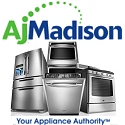
Click to recommend
this site to a friend |
 |
|
Privacy assured
|

|
Myth - If your dishwasher fails to function, you should call a plumber.
Truth - In most cases, no. Major appliances are considerably different from most other plumbing fixtures. Most plumbers are not familiar with the intricacies of the appliance itself and should only be called if the problem lies in the connection to the household plumbing.
(Added: 9-Oct-1999)
Myth - My dishwasher is broken because there is some water in the bottom after the cycle is finished.
Truth - There should usually be some water left in the bottom sump of the dishwasher at the end of a wash. This water keeps the seals moist to avoid them drying out and leaking. When the dishwasher starts, it will first drain for several seconds to remove standing water, then it will fill with fresh water and begin the wash cycle.
(Added: 9-Oct-1999)
Myth - A dishwasher pumps in water to fill it up.
Truth - When needed, a water fill valve simply opens to allow the household water pressure fill the machine. The pump is only involved in draining the appliance and washing.
(Added: 16-Oct-2001)
Myth - A dishwasher stops filling when the float inside the tub rises high enough to represent a proper fill level.
Truth - Most modern dishwashers fill using a timing method, filling for a set amount of time. The float is usually for over-fill protection only, stopping a fill before it gets to the point of flooding. Under normal operation the float and float switch should never come into play.
(Added: 6-Jun-2007)
Related Categories:
|




|


